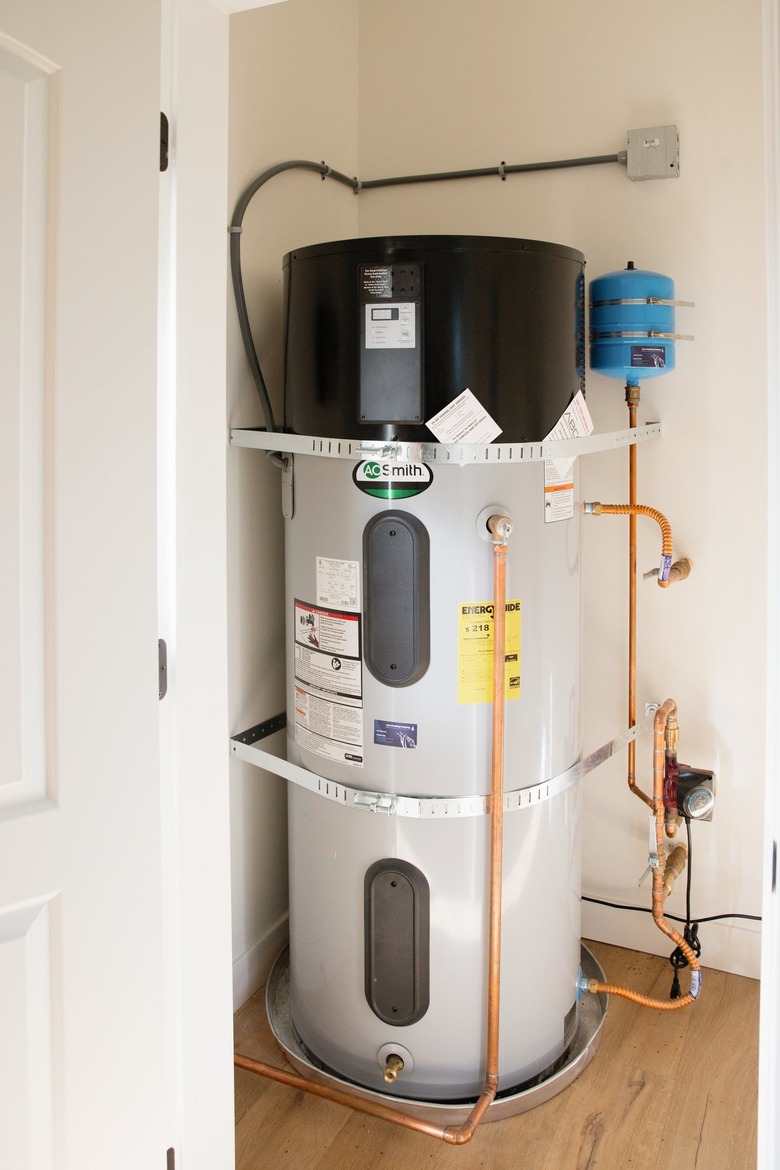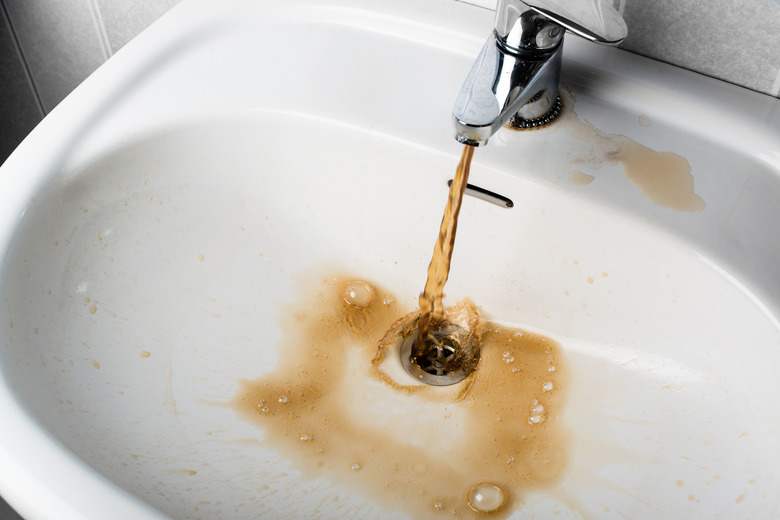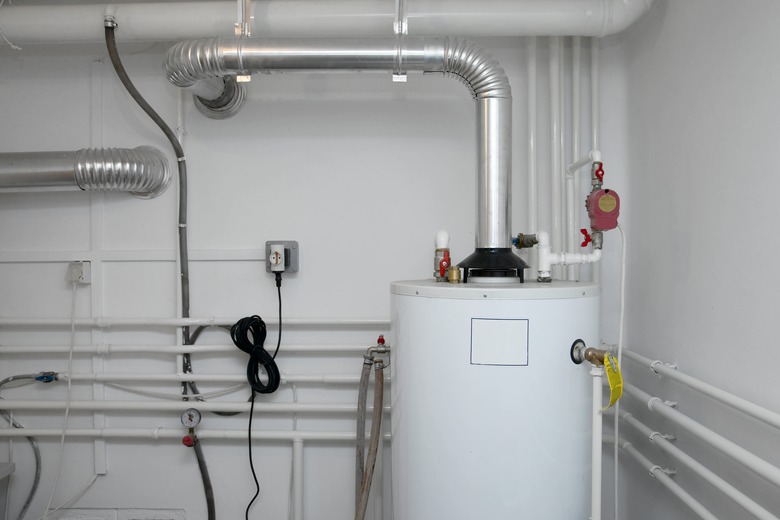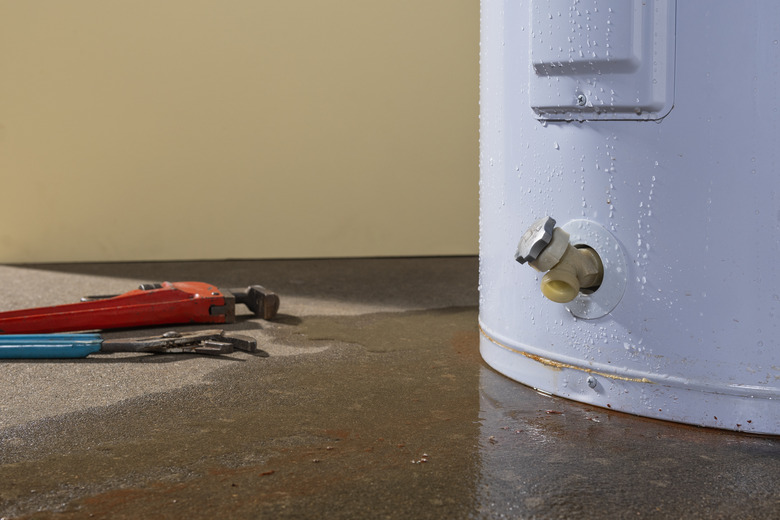The Ultimate Water Heater Repair Guide
We may receive a commission on purchases made from links.
Probably the most obvious indication of the need for water heater repair is the loss of hot water in your house, but there are other common problems. For example, the water may be discolored or may have an unpleasant odor, or you may hear knocking sounds from the tank. You may also notice water on the floor around the tank, which is definitely a signal you shouldn't ignore and may warrant a call for emergency service.
Gas and electric water heaters differ in how they heat water, so bas burners and electric heating elements call for different repair strategies. Whereas DIY-savvy homeowners may be able to service and replace electric heating elements and thermostats themselves, repairing a malfunctioning gas burner or gas valve is almost always a job for a licensed plumber or HVAC pro.
When it comes to resolving problems that don't involve loss of hot water, such as poor water quality, knocking or thumping noises, or leaks, the hot water heater repair strategies are the same for both gas and electric models. Many of these problems are preventable with proper maintenance, and once they occur, they are usually easy to fix if the water heater isn't old, worn out, and in need of replacement.
Temperature Issues
Temperature Issues
Water from your hot water faucet can run lukewarm or cold for several reasons. The first thing for which to look is a crossed hot and cold water connection. Turn off the hot water supply at the water heater and turn on a hot water faucet, and if the water still flows, you have a crossed connection. It may be in the hoses supplying that faucet, or it could be somewhere else. If you can't find it, call a plumber to resolve the issue. After ruling out a crossed connection, the troubleshooting strategy depends on the type of water heater.
Electric Water Heater
The first thing to check is the circuit breaker in the main panel. It may have tripped, and if so, reset it. If it trips again, that indicates a short in one or both of the heating elements or thermostats or the electric wiring. You can diagnose and replace a defective thermostat or heating element yourself, but if you suspect a wiring problem, you're better off calling a plumber or electrician.
If the breaker hasn't tripped, check the temperature control; it should be set to around 120 to 125 degrees. If it's set correctly and you're sure the tank is large enough to meet the needs of the household (which it probably is if this is the first time you're experiencing problems), get out your multimeter so you can do continuity tests on the thermostats and heating elements.
To conduct these tests, you need to switch off the breaker, disconnect each thermostat and element in turn, and measure resistance across the device's terminals. In most cases and depending on the size of the tank, a resistance reading between 10 and 16 ohms indicates a good heating element. Replace a heating element or thermostat if the resistance is very high or infinite (OL on a digital meter), indicating a broken electrical path. Follow the replacement instructions in your owner's manual.
Gas Water Heater
When you're not getting enough hot water from a gas water heater, it's usually because the burner isn't working, and assuming you haven't run out of gas, that's almost always due to a defective pilot light or electronic ignition system.
If your water heater has a pilot light, try lighting it. If it comes on but won't stay lit, it's time to replace the thermocouple. If you can't get it to light at all, the pilot tube may need to be cleaned out. If your water heater has an automatic spark igniter, it's wired into the home's electrical system, so check the breaker and reset it if it has tripped.
Sometimes, the burner or gas valve itself is defective. If you can get the pilot to come on but the burner doesn't light, call a licensed plumber for service. You can't safely service a gas valve yourself.
Discolored or Smelly Water
Discolored or Smelly Water
Discolored or smelly water coming from both the hot and cold water faucets is certainly alarming, and indicates a problem with the water supply. But if it's just coming from the hot water faucet, the cause is probably the water heater. The tank liner can rust and discolor the water, and rotten egg smells usually come from sulfates released inside the tank. Sometimes, the sulfates come from bacteria in the tank, and sometimes, they are produced from a reaction between water from a water softener and the magnesium anode rod inside the tank.
The water heater repair strategy for this problem is two-fold: Flush the tank and replace the anode rod, which is a long, metallic rod inserted through a hole in the top of the tank. It's often a good idea to drain the tank and partially refill it with a 50-50 vinegar solution that you pour through the anode rod aperture after first removing the rod. Let the mixture sit for a few hours and then drain the tank and allow it to refill from the water supply.
If the tank has a magnesium anode rod and the water is smelly, replace the rod with a zinc-aluminum one. This metal combination doesn't react as strongly as magnesium with water processed by a water softener. If smells and discoloration persist after this treatment, consider a water heater replacement.
Hissing or Knocking Sounds
Hissing or Knocking Sounds
When sediment builds up in the bottom of the tank, it traps air, which is released as bubbles when the water heats up. The bubbles are responsible for the knocking and hissing sounds, and while they won't cause any damage by themselves, they indicate the need to flush the tank to get rid of the sediment. If you allow the sediment buildup to increase, it eventually affects the performance of the appliance, and your energy bill goes up.
Sediment is typically a mixture of hard water deposits (scale) and tiny bits of rusted metal, and you need to flush the tank to get rid of it. Because vinegar effectively dissolves both rust and scale, filling the tank with a 50-50 vinegar solution and letting it sit for several hours produces a more complete flush. This is also a good time to replace the anode rod, which you should do every four to five years as part of routine maintenance.
Water on the Floor
Water on the Floor
When you see water on the floor around a water heater, it's never a good sign and could signify a more or less serious problem depending on where it's coming from. If you can trace the leak to a plumbing connection, you may be able to stop it by tightening that connection. The water heater tank itself may be leaking, though, and if so, it's time for a new water heater.
When water is visible at the base of the tube that leads from the temperature and pressure relief valve situated on the top or side of the tank, it means the valve has been opening. This could be because the temperature is set too high, so try turning down the temperature control. If the temperature is already set to a safe value, consult a plumber because you may need to install an expansion tank next to the water heater to relieve pressure inside the tank.



